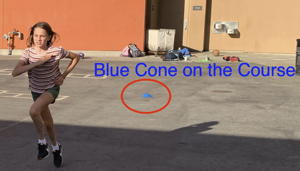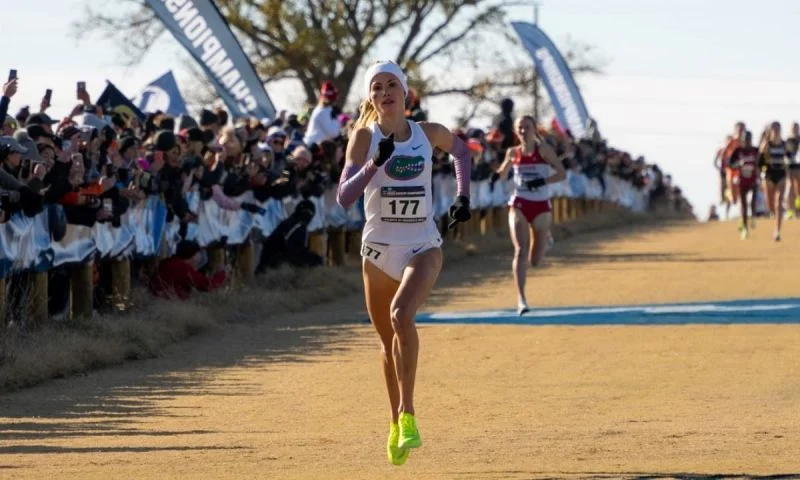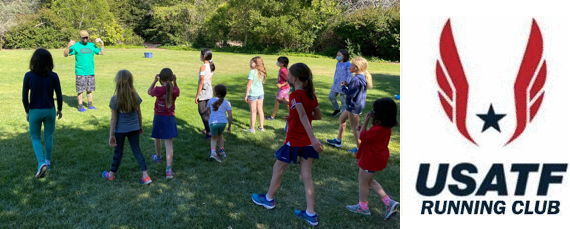Run Club is All About VO2 Max! What the ??!! is VO2 Max?
Run Club is All About VO2 Max! What the ??!! is VO2 Max??!!
Run Club is a running program for kids that is non-competitive at practice. We have EVERY level of runner from very beginner to advanced. Everyone finds a training buddy or three or four or five... We teach real running concepts and techniques such as pace, endurance, speed, form, and strategy. While we are non-competitive, we do train at a high level so that those who want to do competitive races can also succeed at that. We had 11 runners last season make it through the Pacific/Northern/Central CA and Northern Nevada regional qualifiers (two qualifying races) to make it all the way to the Junior Olympics Nationals Cross-Country Championships in Louisville KY last fall. We are more of a hybrid after-school program that trains two days a week (advanced runners sometimes come for three days) versus a formal club that may train 3-4 days a week, so how do we compete against them? The Answer: VO2 Max!
What is VO2 Max? VO2 Max is how much oxygen a person can intake and use during
exercise which is also known as aerobic capacity. The greater a VO2 Max you
have, the more oxygen you can process through your lungs into your bloodstream
and get to your muscles to generate the maximum amount of usable energy ("ATP").
An average untrained person has a VO2 Max rating of 30, an elite runner has 90,
an Alaskan Iditarod trail sled dog has 240! We can change our VO2 Max rating by
training. What's the best way to train your body for a higher VO2 Max rating?
 The simple answer is: Intervals!! This is what we focus on at Run Club because
intervals give us the most for our two days of training: speed and endurance in
the same workout. What are intervals? Intervals are shorter periods of running
in which you run at a higher speed than normal. This intensity exerts pressure on your body
to keep up with the increased demand in speed. When runners hit a "Blue Cone" on
the course, they increase speed until the next blue cone at which point they go
back to "rest pace" in which they regain their breath and prepare for the next
interval. Rest pace is no joke either because it is sustained running, even if
it is just a slow jog - it's not easy! Even to parents of my runners who run
themselves; don't just go out for your run at the same pace all the time! Throw
in some 30 seconds portions of "Up Pace" (what we call it at Run Club) that
challenges your body. The more intervals you put in your run, the more you will
advance your running and the easier your next race will be. Over the course of a
Run Club season, our main workouts get longer and our intervals get longer too,
but most of the young runners don't even notice that they are running longer and
harder because it's such a gradual change!
The simple answer is: Intervals!! This is what we focus on at Run Club because
intervals give us the most for our two days of training: speed and endurance in
the same workout. What are intervals? Intervals are shorter periods of running
in which you run at a higher speed than normal. This intensity exerts pressure on your body
to keep up with the increased demand in speed. When runners hit a "Blue Cone" on
the course, they increase speed until the next blue cone at which point they go
back to "rest pace" in which they regain their breath and prepare for the next
interval. Rest pace is no joke either because it is sustained running, even if
it is just a slow jog - it's not easy! Even to parents of my runners who run
themselves; don't just go out for your run at the same pace all the time! Throw
in some 30 seconds portions of "Up Pace" (what we call it at Run Club) that
challenges your body. The more intervals you put in your run, the more you will
advance your running and the easier your next race will be. Over the course of a
Run Club season, our main workouts get longer and our intervals get longer too,
but most of the young runners don't even notice that they are running longer and
harder because it's such a gradual change!
Eléonore, Annabel, and Tabitha are great examples of how VO2 Max effects 5K times. This is the progress you can expect from intervals training.
Eléonore 5K Annabel 5K Tabitha 5K
42:19 41:33 37:35
33:58 35:07 35:36
30:59 30:45 31:40 (89 degrees)
29:55 29:46 28:56
27:09 25:06
24:07
"Run Club: The Evolution of Distance Running Training Philosophy"
Hi Run Club Parents,From time to time I will send out some running tips or ideas. Today I am sending an email about the evolution of training philosophy for distance runners (next topics are "Running with Music" and "Simple, Safe, Light Weights Workouts for Kids (for arms only)". This is especially interesting this past NCAA cross-country and indoor track season in regards to Parker Valby (University of Florida) who won the NCAA women's XC championship and then absolutely smashed the 5000 meter NCAA indoor track record (1st ever sub 15 minute indoor 5K lowering the record from 15:12 to 14:56). More about her later...
The Conventional Distance Running Training Wisdom (VOLUME):
I ran NCAA Division I Cross-Country and Track for Vin Lananna. Vin is the current president of USA Track & Field and coached me at Dartmouth College. Our best finish while I was there was a second place team finish for the NCAA championships. He also took my teammate, Bob Kempainen, to two Olympic marathons and a US record for the New York City marathon. He later went to Stanford where he won numerous NCAA championships, then to Oregon, and is now coaching at the University of Virginia. That's all to say he has a lot of coaching experience, but while at Dartmouth our training plan relied heavily on VERY HIGH volume. We would run over 100 miles a week while training for cross-country. I ran many miles with Bob Kempainen and came away wondering to myself, "what is so hard about that?" I now call those "throw-away" miles. They did not help improve my conditioning or cardiovascular output. We also did high intensity interval training which was the most challenging part of our practices and the part that I felt contributed the most to our abilities. What was the result? I always felt that we had way too many injuries at Dartmouth including one season when I had four stress fractures at the same time, two in each leg. Many of my teammates were treating and trying to run through injuries during the season. In later years, I've had these discussions with teammates and I was not alone in feeling that the conventional wisdom strategy = whoever isn't injured at the end of the season is your racing team.
In contrast, my high school coach, Bob Bradley, who is in the USA Track & Field Hall of Fame for high school running coaching took a different approach. He focused on those amazingly difficult and challenging high intensity intervals while keeping the overall mileage very reasonable. This is my kind of training philosophy. Don't pound on your legs and knees running throw-away miles that don't advance your running. Run less, but make all that running count towards advancing your strength, endurance, speed, and most importantly, your racing abilities. A huge week for us would've been 65 miles. In fact, I was able to become a sub 4:15 miler and 52 minute 10-miler on 50 miles a week focusing on making every mile I ran count and taking two full days off every week to keep my body rested so I could focus on high-intensity during practices. What was the result? I don't recall a single injury amongst my teammates in all of our seasons and we won a New York State Cross-Country Championship.
This is what has been posted on the Run Club website for quite some time on the About Page (https://runclubmenlopark.org/about.html) under the "Coach Scott's Running Philosophy" section:
"My personal view on running is that the future of running lies with a heavy emphasis on high-intensity interval training because it gives my runners the most for their two days of practice each week (speed and endurance) while avoiding unnecessary injuries."

Parker Valby, University of Florida: 2023 NCAA Division I Women's Cross-Country Champion
Now about Parker Valby: During her post-NCAA Cross-Country championship interview, she was asked how often she trains on a normal week. Her amazing response was; "I've been running two or three days most weeks this fall." How about mileage? "30ish miles per week." While I have to admit that even to me this is astonishingly on the lower side of even my ideas of NCAA level training, it is where I think the future of distance running training is headed especially since it results in healthier runners with fewer injuries who are able to race at a very high level comfortably.
This is what we do at Run Club. We train 2-3 days a week depending on the age of runners (at the very end you can see my standards for days of training based on age for my 'advanced runners'). Our workouts are intense and focus on high-intensity interval training sometimes combined with stair running (simulating hills) which gives my runners both endurance and speed in the same workout. The most for every step they run.
Injuries at Run Club? In 12 seasons, I cannot definitively say that we've either had or not had an injury at Run Club. I have had a couple of cases of shin splints and Sever's and one case of Plantar fasciitis but many of these are growth plate issues rather than running injuries. I think Run Club's record for healthy running results is extremely high.
Some of you may have recently seen the content I posted about one of our 8 year old runners, Sol. Sol had a great first season at Run Club this fall making it all the way to the Junior Olympics in Louisville KY where he raced quite well especially for a first-time championships racer in his first season of cross-country ever. Sol came into the Run Club season having previously completely a long run of 9 miles. This past week, he completed his first half-marathon distance of 13.1 miles. You might ask, what does Coach Scott think about an 8 year old running 13.1 miles. It's fine if that's what an 8 year old is motivated to do and I'm very happy for Sol's accomplishment. He ran this half-marathon distance at a gentle pace that is age-appropriate. What's more important is what's on either side of that 13.1 mile run. Sol shouldn't be doing over-distance regularly but once in a while is totally fine and after his 13.1 mile run, he should get a solid amount of rest before any other long runs.
Because Fall Cross-Country Season is so intense for Run Club - we did 8 races and for those that went to Junior Olympics it was a 15 week season versus our normal 10 weeks. We will definitely take it easier during Spring Season with just two 5K races and maybe one track race if I can find one and a shorter 8 week season. We will return next fall for another very intense Cross-Country season. We have an especially strong upcoming 9-10 girls team that will be easily ranked in the top 10 in the United States, so we will see just how many runners we can qualify for the Junior Olympics Nationals Cross-Country Championships in Kentucky for December 2024!
Happy New Year and Keep Running!
-Coach Scott
p.s. Spring Season will start on March 18th. Early registration information will be sent out by the end of February.
Run Club Menlo Park is a mix of an after-school program combined with elements of traditional club sport. We only train two days a week as an after-school program, but our two days are at a very high level of intensity since we get rest or do other activities on the other five days. Most "Clubs" will practice 3-4 days a week. Here is my coaching philosophy on training days for kids:
3rd grade and younger: up to 2 days a week unless a 2nd/3rd grader is an advanced runner then they can train 3 days.
4th-5th: Up to 3 days a week. Advanced runners can train 4 days a week.
6th-8th: Up to 5 days a week (must take two days off each week). Middle school kids in my program are "required" to run one day each week on their own in addition to practices.
9th and above: 5 days a week with a race on weekends or weekends off. For my own high school experience, I trained 5 days a week at a very high level. I raced on Saturdays during the season. If no race, for myself, I rested on Sat/Sun in preparation for hard workouts the following week. In my off season, I would run 5 days a week (10 mile run) at a hard pace. I would take two full days off every week. Rest is very important for both physical and mental fitness. Many runners subscribe to the "long run" on the weekend. I'm not one of them (assuming you are doing your regular workouts at high intensity).
"Run Club: Should Kids Do Any Weight Training?"




